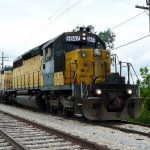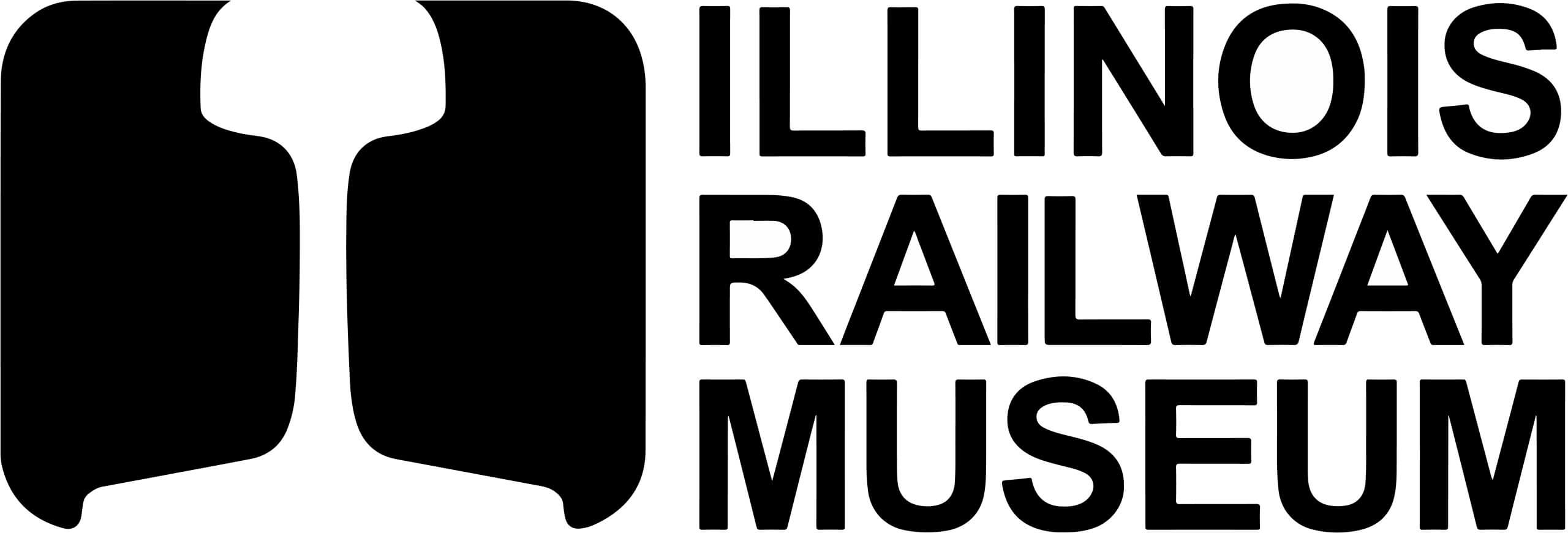Internal Combustion Locomotives

Chicago & North Western 6847
| Description: | Diesel-Electric SD40-2 |
Equipment Information
Chicago & North Western 6847 is an example of the most common type of diesel freight locomotive of the 1970s, the SD40-2. Nearly 4,000 of these locomotives were built and they saw use on railroads across the country, with many still in daily use today.
FUN FACT: This locomotive may be unique at the museum in that it has never been repainted. With the exception of a few areas that have been touched up, the coat of paint C&NW 6847 wears today was applied at EMD in 1974, when it was first built, and has lasted for 50+ years.
COMPARE ME WITH: Burlington Northern 5383, another six-axle, 3000-horsepower freight locomotive built the same year as 6847, in 1974. The BN engine was built by EMD’s arch-rival General Electric and that model, the U30C, competed directly with SD40-2 locomotives like 6847.
Chicago & North Western 6847 Details
Builder: Electro Motive Division GM
Year Built: 1974
Model: SD40-2
Horsepower: 3000
Length: 68ft 8in
Width: 10ft 5in
Height: 15ft 5in
Weight: 360000 lbs
Brakes: 26L
Engine: 16-645E
Motors: 6 EMD D78
Trucks: HTC
Description: Diesel-Electric / ex-UP 3028
Arrived: 2009
Condition: Complete / unrestored / operational
Railroad Deregulation
By the mid-1970s, when the Chicago & North Western ordered this SD40-2 diesel-electric freight locomotive, railroads in the United States were dying. The private railroads had already shed their unprofitable passenger business. What remained was freight, but this too had been hit hard by new forms of competition. Trucks had largely replaced local freight service, while the Interstate highway system made it possible for long-haul trucking to siphon interstate freight business away from the railroads as well. By the late 1970s several major U.S. railroads were in bankruptcy with most of the others in poor financial condition.
The problem wasn’t simply the competition. It was that the railroads, though privately owned, had only a limited ability to modernize or adapt to changing markets. This was due to stringent Federal regulations nearly a century old. In the 1880s, when wealthy “robber barons” owned the railroads, they held monopolies over transportation almost everywhere in the country. The Interstate Commerce Commission had been created to protect the public interest. The ICC regulated how much railroads charged to ship freight, where railroads could build or abandon tracks, when railroads could merge, and many other facets of the business.
Without major competition this worked acceptably, but as competition from trucks sprung up after World War II the railroads, hamstrung by ICC regulations, found that they could not change to adapt. The solution was deregulation in the form of the Staggers Act of 1980, which greatly expanded an earlier 1976 deregulation bill. The Staggers Act allowed railroads to set their own prices and negotiate individual contracts with large shippers, made it easier to abandon unprofitable routes and to modernize operations, and generally permitted railroads to control their business more closely.
The results were remarkable. While thousands of miles of track were abandoned and thousands of railroad workers were laid off, these and other economies permitted railroads to lower freight rates while pulling themselves from the brink of insolvency back to profitability. The railroads reinvested money, financial conditions improved and mergers reduced route duplication. The Chicago & North Western, which nearly went bankrupt in the 1970s, regained financial strength during the 1980s and 1990s. It became part of the vast Union Pacific system in 1995.
Click to return to Internal Combustion Locomotive roster
Click to return to main roster page
